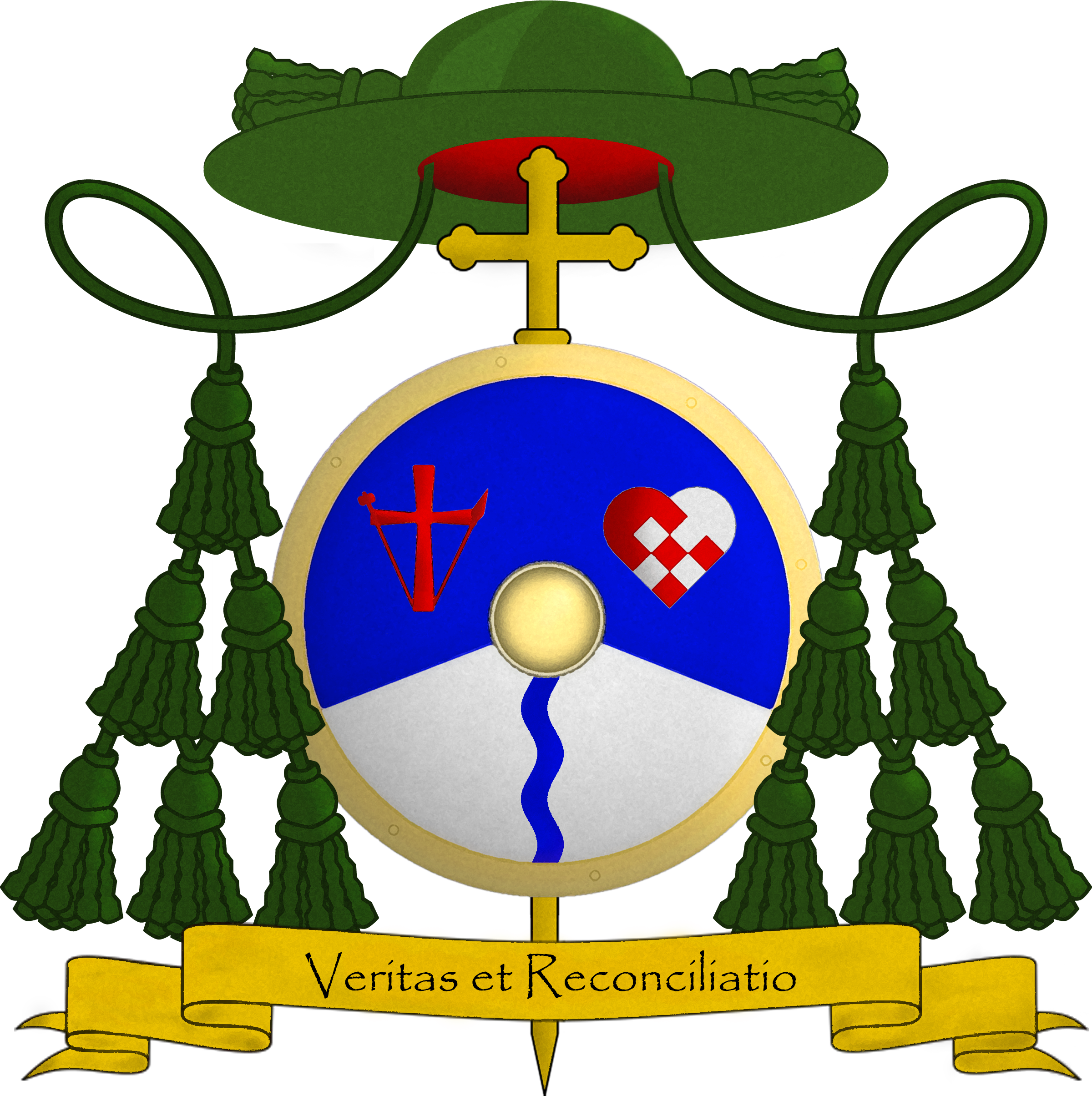The meaning behind Bishop Jon Hansen’s Coat of Arms


Galero. The ecclesiastical hat, called a galero, was originally a pilgrim’s hat like a sombrero. A bishop’s galero is green with six tassels on each side.
Processional Cross The display of a cross behind the shield is used to denote a bishop. The cross of an ordinary bishop has a single horizontal bar or traverse, also known as a Latin cross.
Shield The shield is the normal device for displaying a coat of arms. In this case Bishop Hansen has chosen the profile of a Norse shield as an homage to his Scandinavian ancestry.
Tincture Tinctures constitute the palette of colours and patterns used in heraldry. On Bishop Hansen’s shield, Silver (White) indicates the vast land of the Canadian north, frozen even in the height of summer. In heraldry silver represents Peace and Sincerity. Blue calls to mind the waters of the Deh-cho (Mackenzie River) and the Arctic ocean, the furthermost extent of the Mackenzie-Ft. Smith diocese. In heraldry blue represents Truth.
Symbols The symbols on the shield point to unique identifying characteristics of its bearer such as family of origin, accomplishments and personal interests.
- Julehjerte The Danish Christmas Heart is a hand-made, paper ornament traditionally hung on the Christmas tree and filled with candies for children to find on Christmas morning. The Julehjerte represents Bishop Hansen’s Danish heritage. The red and white bands mimic both the colors of the Danish national flag as well as the Canadian flag, which is the country of Bishop Hansen’s birth. In heraldry the heart is a symbol of deep affection.
- Cross The stylized cross, flanked by the instruments of Christ’s passion, is taken from the seal of the Congregation of the Most Holy Redeemer and represents Bishop Hansen’s life-long connection to the Redemptorists. The Redemptorists are a missionary order founded by St. Alphonsus Liguori dedicated to preaching the Gospel to the most poor and abandoned.
- Umbo The Umbo or shield boss is multivalent representing the Midnight Sun of the Arctic summer solstice. During this time the sun never sets, like the heavenly city “that has no need of sun or moon to shine on it, for the glory of God is its light, and there will be no night there.” (Rev 21.23,25) As a symbol of light, it also ties Bishop Hansen to the papacy of Pope Francis, referencing the Holy Father’s first encyclical Lumen Fidei, which describes the Light of Faith which leads to truth. From the umbo water flows referencing the river flowing from the temple where everything, “will become fresh; and everything will live where the river goes.” (Ez 47)
Motto Bishop Hansen’s motto translates into English as “Truth and Reconciliation”. It was inspired by the Commission organized by the parties of the Indian Residential Schools Settlement Agreement. The Commission was part of a holistic and comprehensive response to the abuse inflicted on Indigenous peoples through the Indian residential school system, and the harmful legacy of those institutions. The Commission was officially established on June 2, 2008, and was completed in December 2015. The motto is a reminder that, though the Commission has ended, the Calls to Action must not be forgotten and the ongoing work of reconciliation must continue in the north and across Canada. This work continues the labour of Christ who said of himself, “I am the way, the truth and the life.” (Jn 14.6) and through whom, “God was pleased to reconcile to himself all things, whether on earth or in heaven, by making peace through the blood of his cross.” (Col 1.20)

Bishop Hansen was very pleased to have his coat of arms carved into the wood of his Crozier (staff) by Grant MacMillan, a professional wood carver in Vancouver.

